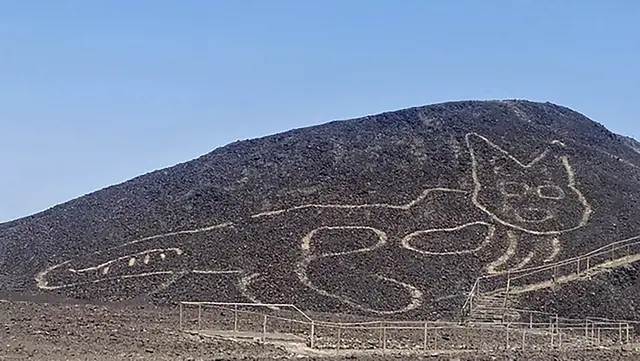Archaeologists busy with maintenance work at the UNESCO heritage site of Nazca Lines in Peru came upon the etching of a large cat stretching for 37 meters on a hillside.
Experts believe that the cat-like geoglyph might be 2,000 years old, dating back to a time between 200 BC and 100 BC. "The figure was in the process of disappearing because it was on a slope that was subject to quite extensive erosion, which resulted in it being hidden for many years," Johny Isla, the ministry's specialist for the Nazca-Pampa region, told Reuters Television.
The discovery is the most recent in the Nazca Lines, a protected area where the etchings of a monkey, a spider, a pelican, a whale, a dog, a hummingbird and a human have already unveiled thanks to plane and drone explorations from the late 1920s to today.
Geoglyphs – large, ancient designs produced on the ground by piling up stones or removing soil – can be found in different continents of the world, including Australia and Europe.
Though the Nazca Lines is home to most of the geoglyphs found on the planet, England hosts some of the most ancient and fascinating etchings discovered.
Of the more than 50 hillside chalk carvings found in England, 14 are of white horses, which have become something of a symbol for the country's southern region. The Uffington White Horse, England's oldest geoglyph, is believed to be 3,000 years old.
Experts haven't yet agreed what was the use of geoglyphs. Although it looks like art, researchers believe they served as ceremonial and burial sites, or travel markers.
(REUTERS)
 简体中文
简体中文












